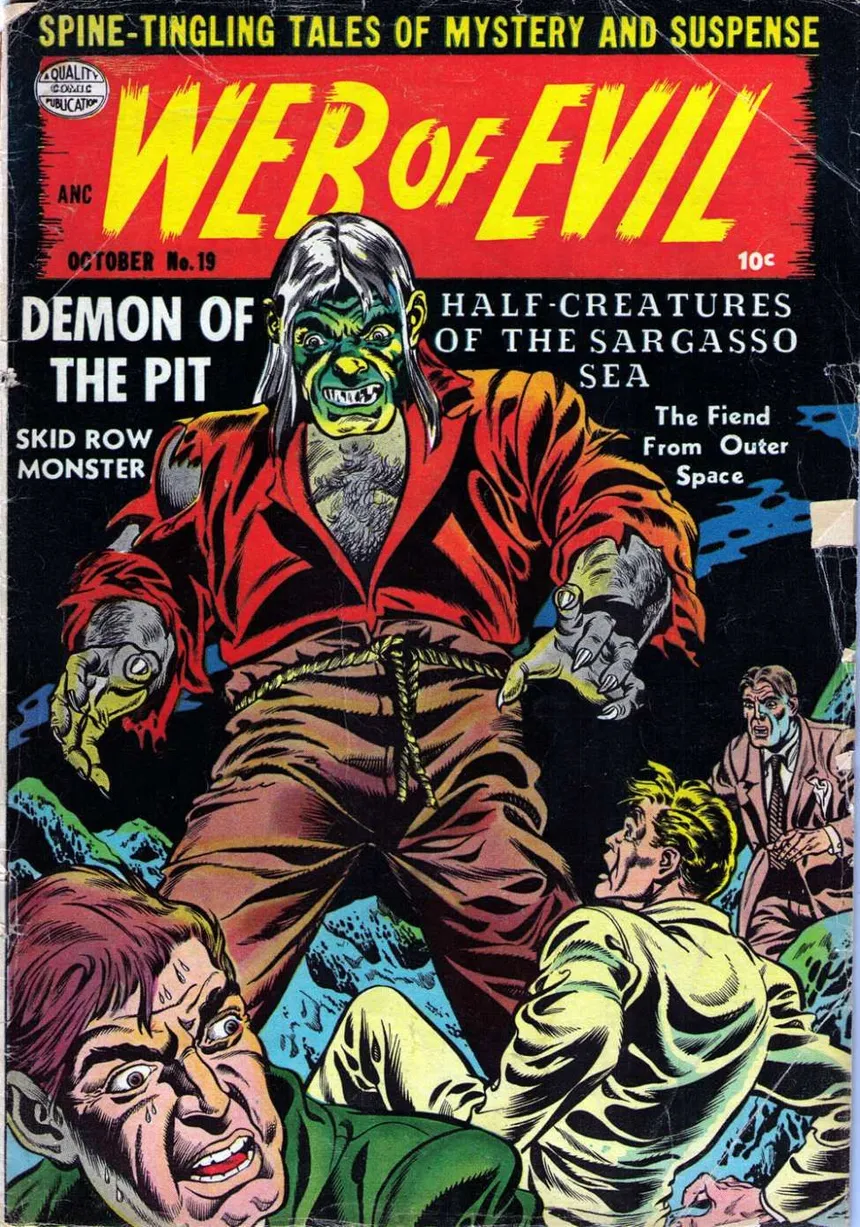
Review by Marouska Montebello
When discussing Golden Age comics, horror is seldom the first genre that comes to mind. While DC and Marvel undeniably played pivotal roles in popularizing comic book literature, it’s important to recognize that a variety of other publishing houses also sought to carve out their own distinctive identities within the industry. These companies made significant contributions, particularly in niche genres like horror, which, though often overlooked, were crucial in shaping the broader landscape of comics during that era.
In the 1950s, horror comics began to garner the recognition they deserved, largely due to the chillingly imaginative Web of Evil series. Reading this literature today evokes a deep sense of nostalgia, transporting readers to a time when horror was as much about the spectacle as it was about the storytelling. The era’s unique blend of visual and narrative intensity left an indelible mark on the genre, defining horror as a form of dramatic, and often unsettling, entertainment.

Published by Quality Comics from November 1952 to December 1954, Web of Evil delivered a spine-chilling thrill ride across its 21-issue run, offering readers a macabre mix of ghosts, killers, zombies, and every imaginable horror. Though it may not be as widely recognized today as some of its contemporaries, Web of Evil endures as a captivating relic of the Golden Age of comics, continuing to enchant collectors and horror aficionados with its eerie charm.

Web of Evil masterfully blended supernatural horror with gritty crime, offering narratives centered on vengeful ghosts, cursed objects, and demonic forces. Each issue presented dark, twisted tales imbued with moral lessons steeped in fear. The protagonists, often portrayed as lacking in judgment, would undergo a transformation, emerging with newfound clarity by the story’s conclusion. The interior art was richly colored, enhancing the vibrancy and terror of the antagonists, while the covers were equally striking and gruesome, perfectly encapsulating the eerie tales within.

The series was distinguished not only by its unsettling stories but also by the exceptional talent of its artists. Notable contributors included Reed Crandall, whose detailed and dynamic artwork heightened the series’ eerie atmosphere, and Jack Cole, celebrated for his innovative work on Plastic Man. Their contributions brought a level of visual sophistication to Web of Evil, setting it apart from the multitude of other horror titles of the era.

Established in 1954, the Comics Code Authority (CCA) imposed strict censorship on comic books, with particularly stringent rules targeting the horror genre. This crackdown forced many horror titles, including Web of Evil, to either drastically revise their content or face cancellation. Ironically, this occurred during a period when horror comics were gaining popularity, particularly in the wake of World War II. By the mid-1950s, however, concerns from parents, educators, and politicians about the potential corruptive influence of these comics led to heightened scrutiny and regulatory action.

Although its run was brief, Web of Evil made a significant impact on horror comics with its bold stories and eerie art, reflecting the post-war era’s fascination with fear. Today, original issues are highly prized by collectors for their rarity and their role in shaping the horror genre. The series is still accessible and can be enjoyed at the Digital Comic Museum, where Golden Age comics are available for free reading and download: https://digitalcomicmuseum.com.
Web of Evil may not be as well-known as other horror series, but its influence is evident in later horror comics and TV shows like Tales from the Crypt and Creepy. These successors built on the dark, moral themes and shocking visuals that Web of Evil helped to establish.

